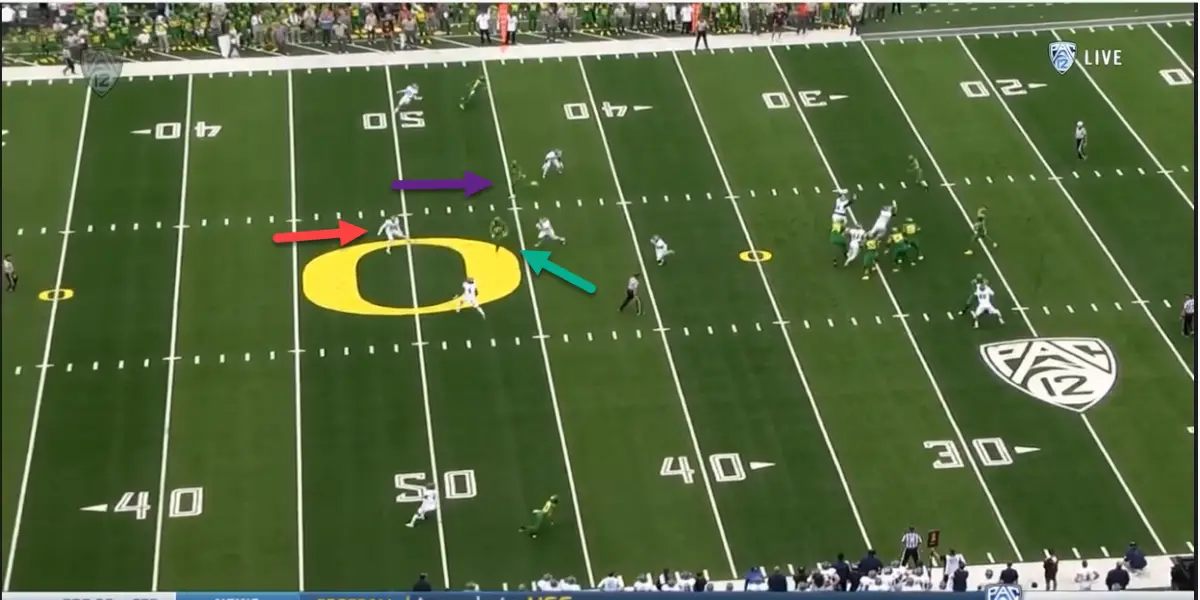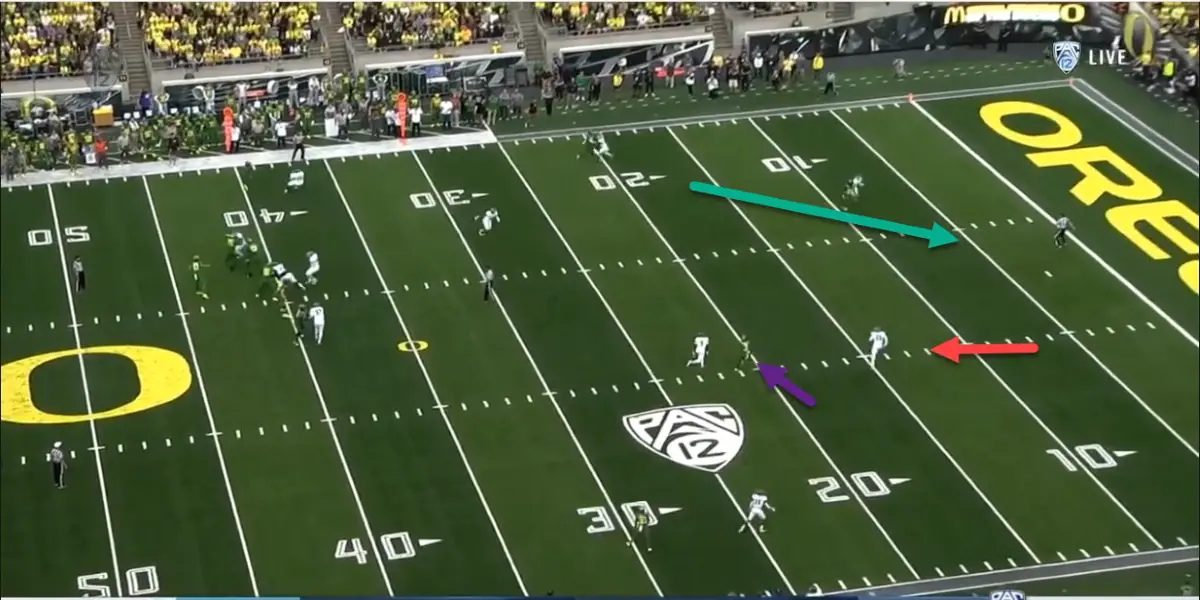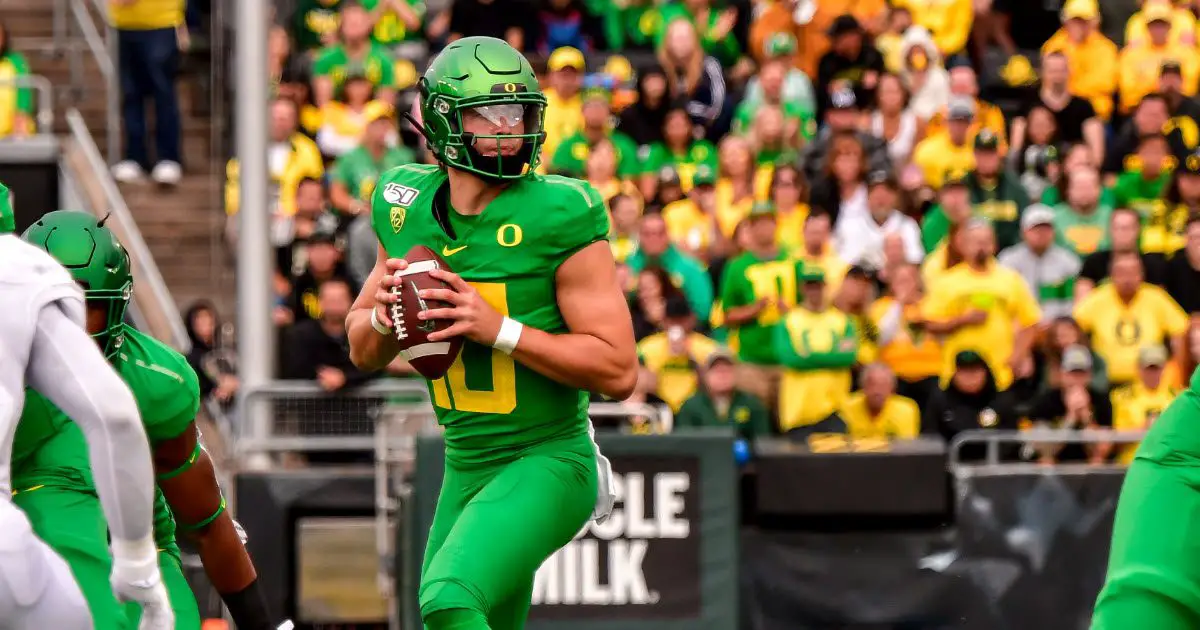It is becoming clearer by the week the kind of passing wizard we have in Marcus Arroyo. While some fans have criticized Arroyo for his lack of creativity, my goal today is to remind you that Arroyo is a passing specialist, tasked to bring a physical brand of football to Oregon. Indeed, in back-to-back weeks, Coach Eric Boles introduced more RPO packages that complement the plays analyst Joshua Whitted revealed the week before.
One legitimate criticism aimed at Arroyo is that he has obliterated Oregon’s running game. However, I doubt Arroyo is the architect of that strategy. He is finding ways to introduce passing packages that feature play-action passes I’ve called passing sequentials, in order to exploit Justin Herbert’s skills at QB, and in turn, open up the offense.
Explosive Plays
Back in June, I wrote an article explaining what I believed to be the key components to an powerful offense, which starts with the offense’s core plays. As linked above, Coach Boles introduced the passing plays that look to be Arroyo’s new set of core plays. So, what do Oregon’s explosive plays (plays that gain more than 20 yards) look like?

Pick Your Poison
Above is an example of an explosive play that Arroyo drew up out of the shotgun formation — the same formation that Oregon runs the majority of its core RPOs out of. This time, he utilizes the traditional play-action pass to stun defenses. In the screenshot above, pay particular attention to Montana’s safety (red arrow) as he tries to read Herbert. He is forced to cover either Ryan Bay (green arrow) or Jacob Breeland (purple arrow). He chooses Bay, but both receivers were going to be open for a huge gain.
In the video above, we see a pulling guard, and the quarterback puts the ball in the belly of the running back — all signs that it’s a running play. But the defense soon discovers it’s a playy fake, as Arroyo sends Bay on a Post route and Breeland on a wheel route. The Montana safety cannot win this battle.
All About Timing
I’ve personally thought the best time to call an explosive play is around your own 35-45 yard line, as Arroyo does above. The other time to call explosive plays is just inside your opponent’s 45 yard line, such as below. A defense isn’t usually expecting offenses to be aggressive in either of situation, so players and coaches on defense are often caught off guard when offensive coordinators dial up an explosive play.

Gotcha!
Notice where the free safety is (red arrow) in the screenshot above. This play is designed to make the free safety cover the slot receiver (purple arrow) so he is unable to assist the corner responsible for a deep pattern on the other side of the field (green arrow).
In the video above, as we see the play unfold, the boundary safety covers Bay, leaving the boundary corner in one-on-one coverage. Bryan Addison has so much room to get open that Herbert can throw the ball anywhere he wants to.
My true hope is Arroyo begins to introduce the full range of core and sequential running plays that Chip Kelly used in order to torch every defensive coordinator in college football. In the meantime, Arroyo certainly is assisting the running game with these RPO and play-action packages that now feature the kinds of explosive passing plays that open the field up for the run game.
Mike West
Las Vegas, Nevada Top Photo by Eugene Johnson
 Spencer Thomas, the FishDuck.com Volunteer Editor for this article, is an attorney for the Social Security Administration in Atlanta, Georgia, and coaches football at Hillgrove High School in Powder Springs, GA.
Spencer Thomas, the FishDuck.com Volunteer Editor for this article, is an attorney for the Social Security Administration in Atlanta, Georgia, and coaches football at Hillgrove High School in Powder Springs, GA.
Mike West was born in Southern California and moved to Eugene in 1976. He attended his first Oregon Football game and watched USC maul the Ducks 63-0. Despite the disappointment he became an avid fan after watching the Rich Brooks show every Sunday in the Fall. After graduating from the University of Oregon, he returned to Los Angeles and enjoyed a career in Customer Service for two decades. Thrilled at the ascent of Oregon Football, he attended both Rose Bowls, living just five miles from the stadium. He now lives in Las Vegas.

